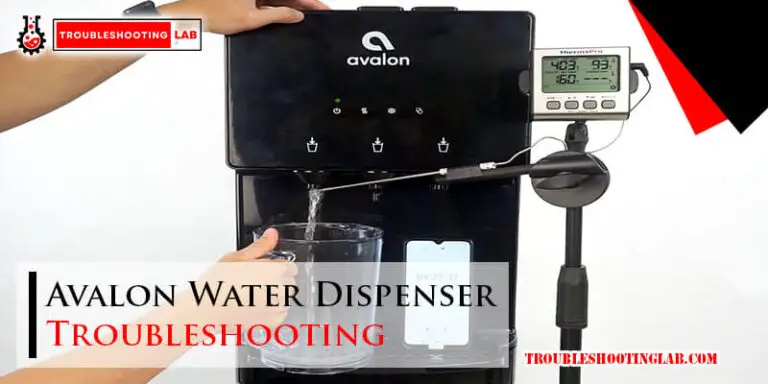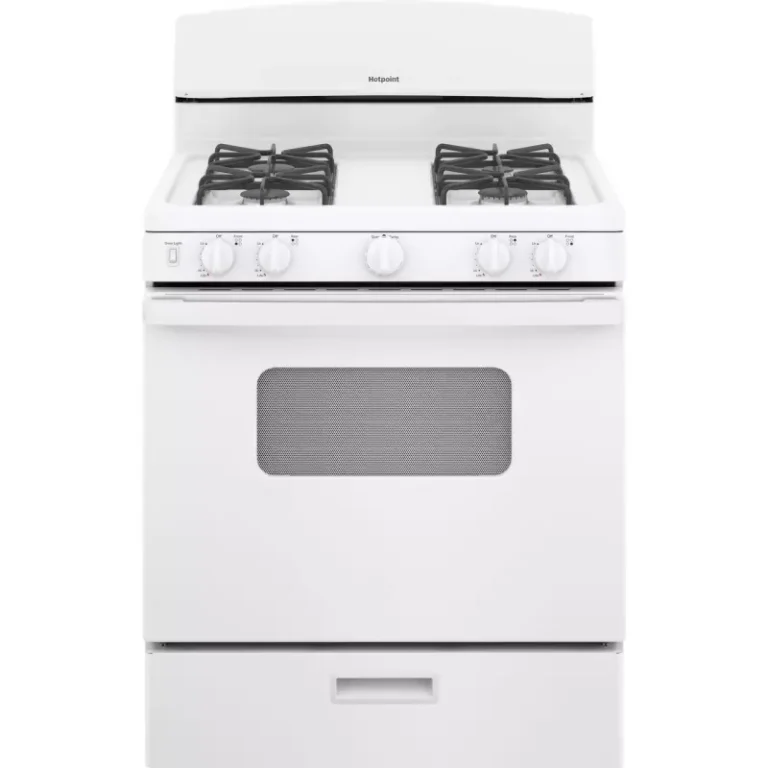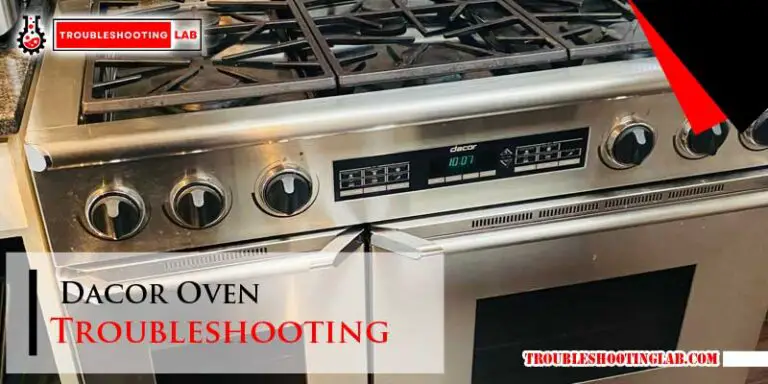Kitchenaid Dishwasher Troubleshooting: Easy Fixes Guide
You rely on your Kitchenaid dishwasher to keep your kitchen running smoothly, but what happens when it starts acting up? The frustration of dirty dishes piling up can be overwhelming.
You might find yourself wondering if you need to call in a professional or if there’s a simple fix you can handle on your own. Before you reach for your phone, take a deep breath and dive into the world of Kitchenaid dishwasher troubleshooting.
This guide is designed to empower you with the knowledge to tackle those pesky issues that might be hindering your dishwasher’s performance. Whether it’s a mysterious leak, strange noises, or dishes that just don’t come out clean, we’ve got you covered. By the end of this article, you’ll be equipped with practical tips and solutions that can save you time and money. So, let’s roll up our sleeves and get your dishwasher back in top shape!
Common Problems
When your KitchenAid dishwasher starts acting up, it can feel like your kitchen routine has hit a serious snag. But don’t worry, many common issues have straightforward solutions you can tackle yourself. Understanding these problems not only saves you time but also extends the lifespan of your appliance. Let’s dive into some of the most frequent issues you might encounter.
Dishwasher Not Starting
One of the most frustrating moments is when your dishwasher simply won’t start. Ensure the door is properly latched; often it’s just a case of the door not being closed securely. Check the power connection—sometimes, a simple plug-in can solve the problem. If the control panel is unresponsive, resetting the dishwasher can be a quick fix.
Dishes Not Drying Properly
Ever opened your dishwasher to find dishes still wet? This is a common complaint. Verify that you’re using rinse aid; it helps water slide off dishes more effectively. Examine the heating element; if it’s faulty, it might need replacement. Make sure not to overload the dishwasher, as crowded dishes can impede proper drying.
Water Not Draining
Standing water at the bottom of your dishwasher is never a welcome sight. Check for obstructions in the drain or filter; food particles can easily clog these areas. Look at the drain hose for kinks or clogs that might be preventing water flow. Regular cleaning can prevent this issue from recurring.
Unusual Noises
Is your dishwasher sounding like a marching band? Listen closely; it might be telling you something. Ensure dishes aren’t clinking together; rearranging them can sometimes silence the noise. Inspect the spray arms for blockages that could be causing odd sounds. If you hear grinding, the motor may be struggling and might need professional attention.
These common problems are simple to troubleshoot with some basic checks and adjustments. What’s your dishwasher’s story? Can one of these tips help you get back to a quieter, more efficient kitchen routine?
Basic Maintenance Tips
Keeping your Kitchenaid dishwasher in top shape doesn’t require much effort. Basic maintenance ensures your appliance runs smoothly and lasts longer. Regular care prevents bigger issues down the line. Here are some easy tips to keep your dishwasher working efficiently.
Regular Cleaning Routine
A consistent cleaning schedule can save you time and money. Wipe down the interior weekly to prevent residue buildup. Use a damp cloth and mild detergent for best results. Check the door seals and wipe them clean to avoid leaks. This simple routine keeps your dishwasher hygienic and efficient.
Inspecting And Cleaning Filters
Filters play a crucial role in trapping food particles. Monthly inspection prevents clogs and ensures water flows freely. Locate the filter at the bottom of the dishwasher. Remove it carefully and rinse under warm water. Make sure it’s free from debris before placing it back. Clean filters improve washing performance.
Checking Spray Arms
Spray arms distribute water throughout the dishwasher. Regular checks ensure they function properly. Remove and rinse them to clear blockages. Look for cracks or damage that might affect cleaning. If spray arms are damaged, consider replacing them for optimal results. Proper spray arm maintenance leads to cleaner dishes.
Quick Fixes For Startup Issues
Experiencing startup issues with your Kitchenaid dishwasher can be frustrating. Luckily, there are simple solutions to get it working smoothly. Whether it’s a power glitch or a door latch problem, these quick fixes can help. Let’s dive into some effective troubleshooting steps.
Ensuring Power Supply
First, check if the dishwasher is plugged in. Sometimes, the plug can get loose. Ensure it’s firmly connected to the power outlet. Inspect the circuit breaker. It might have tripped, cutting off electricity. Switch it back on to restore power. Make sure the power button on the dishwasher is pressed. Without this, the appliance won’t start.
Resetting The Dishwasher
Resetting can solve many startup problems. To reset, unplug the dishwasher. Wait for a few minutes. This lets the system clear any errors. Plug it back in and try starting it again. Some models have a reset button. Press it if available to reset the internal settings.
Checking Door Latch
The door latch must be secure for the dishwasher to start. Inspect the latch for any visible damage. Replace it if broken. Sometimes, debris can obstruct the latch. Clean it gently with a cloth. Ensure the door is closed tightly. A loose door can prevent startup.

Credit: www.kitchenaid.ca
Solving Water Drainage Problems
Kitchenaid dishwasher troubleshooting involves tackling water drainage issues efficiently. Check filters, drains, and hoses for blockages. Regular maintenance ensures optimal performance and prevents future problems.
Solving water drainage problems in a KitchenAid dishwasher can be tricky. Blocked water flow leads to poor cleaning results. Dirty dishes remain a headache. Understanding potential causes can save time and effort. Dive into three common solutions to drainage issues.Clearing Blocked Drain Hose
A blocked drain hose often causes water drainage issues. Detach the hose from the dishwasher. Inspect it for kinks or clogs. Use a flexible brush to clear any debris. Reattach the hose securely. Ensure it is not bent or twisted.Checking Garbage Disposal Connection
The garbage disposal connection affects drainage. Ensure the knockout plug is removed. Disconnect the hose from the garbage disposal. Check for any blockages. Clean the connection thoroughly. Reattach the hose firmly to prevent leaks.Inspecting Drain Pump
The drain pump might be the culprit. Unplug the dishwasher before inspection. Locate the pump at the bottom of the unit. Check for any foreign objects blocking it. Spin the impeller to ensure it moves freely. Replace the pump if it shows signs of damage.Addressing Noise Concerns
Is your Kitchenaid dishwasher making strange noises? Noisy dishwashers can be annoying. They can disrupt the peace of your home. Identifying the source of the noise is crucial. It can help ensure your dishwasher runs smoothly. Let’s explore some common causes and solutions for dishwasher noise.
Securing Loose Parts
Loose parts can cause rattling sounds. Check the dishwasher’s interior for loose components. Ensure racks and spray arms are secure. Tighten any loose screws or clips. This simple step can often reduce noise significantly.
Leveling The Dishwasher
An uneven dishwasher can vibrate and make noise. Use a level tool to check its position. Adjust the legs if needed. Ensure the dishwasher sits firmly on the floor. A stable position helps minimize unnecessary vibrations.
Inspecting Motor And Bearings
A faulty motor or worn bearings can create humming sounds. Listen closely to identify these issues. If the noise persists, consider professional help. Replacing damaged parts can restore quiet operation.
Improving Drying Performance
Are you facing issues with your Kitchenaid dishwasher’s drying performance? This can be frustrating, especially when dishes come out wet or spotty. Improving the drying performance of your dishwasher involves a few simple adjustments. These changes can ensure that your dishes come out dry and ready for use. Let’s dive into the key techniques.
Using Rinse Aid Effectively
Rinse aid plays a crucial role in drying dishes. It helps water slide off surfaces, reducing spots and enhancing dryness. Ensure your rinse aid compartment is filled regularly. Adjust the setting to dispense more rinse aid if needed. This can significantly improve drying results.
Adjusting Heat Settings
Heat settings impact how well your dishes dry. Check your dishwasher’s manual for heat adjustment options. Some models allow you to increase the drying temperature. A higher heat setting can help evaporate water more efficiently. Use this feature to achieve better drying results.
Loading Dishes Correctly
Proper dish loading is essential for effective drying. Arrange dishes so water can drain freely. Avoid overcrowding the dishwasher, which can trap moisture. Place items like cups and bowls facing downwards. This positioning helps water escape easily, improving drying performance.
When To Call A Professional
Is your KitchenAid dishwasher acting up? It’s frustrating when your appliance doesn’t work as expected. You try to fix it yourself, but sometimes, despite your best efforts, the problem persists. Knowing when to call a professional can save you time and prevent further damage. Let’s explore some key points to consider before reaching out for expert help.
Identifying Persistent Issues
Have you tried multiple solutions, but your dishwasher still refuses to cooperate? Persistent issues often indicate deeper problems that require professional intervention.
Consider if the same error keeps popping up despite troubleshooting steps.
Whether it’s unusual noises, drainage problems, or error codes, recurring issues deserve attention from a skilled technician.
Understanding Warranty Coverage
Before calling a professional, check if your dishwasher is still under warranty.
Warranty coverage can save you significant repair costs. Contacting the manufacturer could be the first step in resolving your issue without additional expenses.
Ensure you understand what your warranty covers to avoid unnecessary charges.
Finding A Reliable Technician
So, you’ve decided a professional is necessary. How do you find someone trustworthy?
Look for technicians who specialize in KitchenAid appliances. They possess the expertise needed for efficient repairs.
Read reviews and ask for recommendations. A reliable technician ensures your dishwasher is back to peak performance without fuss.
Have you faced challenges with DIY repairs? Share your experiences and thoughts. A professional’s expertise can be invaluable in keeping your dishwasher running smoothly. Don’t hesitate to make the call when needed.

Credit: www.kitchenaid.com

Credit: kitchenaid-appliance-repair-professionals.com
Frequently Asked Questions
Why Is My Kitchenaid Dishwasher Not Starting?
Your dishwasher might not start due to a power issue. Check the power supply and ensure the door is closed properly.
How Do I Reset My Kitchenaid Dishwasher?
To reset, unplug the dishwasher for one minute. Plug back in to restart.
Why Is My Dishwasher Not Cleaning Dishes Properly?
Clogged spray arms or a dirty filter can cause this. Clean them for better performance.
What Causes My Dishwasher To Leak Water?
A faulty door seal or clogged drain might cause leaks. Inspect and clean them regularly.
Why Does My Dishwasher Make Loud Noises?
Noisy operation can be due to loose items. Ensure dishes are properly arranged and check for obstructions.
Conclusion
Solving Kitchenaid dishwasher issues doesn’t have to be hard. Basic checks help resolve common problems. Resetting the appliance often fixes minor issues. Regular maintenance keeps your dishwasher running smoothly. Clean filters and spray arms routinely. Consider professional help for complex repairs.
Following these tips enhances your dishwasher’s performance. Remember, simple troubleshooting saves time and money. Keep your appliance in top shape with care. A well-maintained dishwasher lasts longer and works better. Stay informed and proactive for a hassle-free experience. Enjoy your efficient and reliable Kitchenaid dishwasher!






